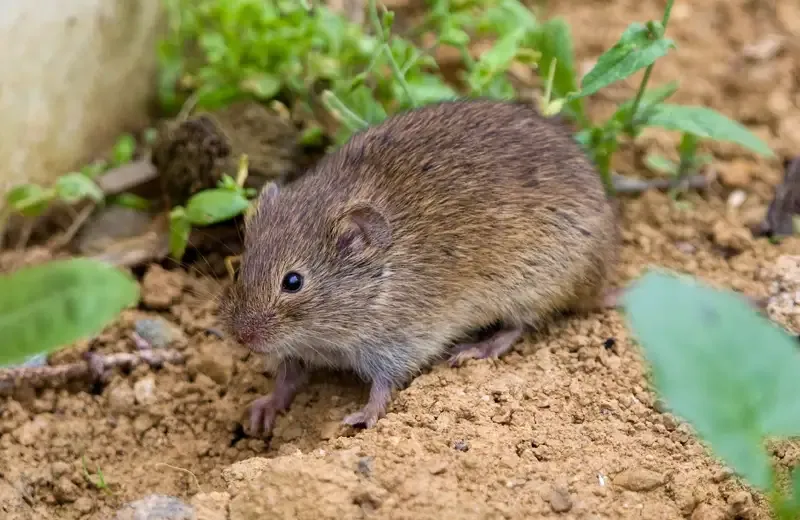Reliable Vole Control Solutions: Handling Vole Pest Issues
Reliable Vole Control Solutions: Handling Vole Pest Issues
Blog Article
Comprehensive Guide to Reliable Vole Insect Control: Invasion Recognition and Treatment Techniques
In the realm of effective parasite control, vole problems posture an one-of-a-kind difficulty that requires a strategic technique. These little rats, commonly incorrect for computer mice, can ruin gardens, lawns, and plants if left untreated. Identifying the indications of vole presence and applying targeted treatment techniques are vital components of an effective pest monitoring strategy. By exploring the subtleties of vole behavior, recognizing vital signs of infestation, and assessing an array of control options, one can establish a comprehensive approach to combat these elusive insects.
Understanding Vole Habits
Vole habits is characterized by their tunneling behaviors and rapid reproduction rates, making them a challenging parasite to regulate successfully. These little rats commonly develop complex tunnel systems underground, using them for shelter, food storage, and transportation. Voles are herbivores, eating a range of plants, bulbs, origins, and turfs, which can create substantial damages to gardens, orchards, and lawns. Their rapid reproductive rate further complicates control efforts, with females efficient in creating multiple trashes in a solitary year, each having numerous children.
Voles are most energetic during the very early morning and evening hours, investing most of their time foraging for food. Their tunneling habits not only interrupt grass and yards but additionally make them challenging to discover and eliminate. Recognizing vole behavior is essential for efficient parasite control techniques. By determining their burrow areas, monitoring feeding areas, and executing targeted control methods, such as trapping or habitat modification, vole invasions can be managed effectively.
Signs of Vole Problem

Prevention Strategies
Implementing efficient prevention methods is essential in decreasing vole infestations and safeguarding vegetation from their devastating feeding practices. To avoid vole problems, it is essential to start by getting rid of potential food sources and sanctuary.
Regularly evaluating the residential property for indicators of vole browse around these guys activity, such as runways and delve openings, is vital for early detection and prompt activity. If vole task is believed, think about making use of traps or repellents tactically positioned near their paths. Using natural predators like snakes or owls can additionally assist maintain vole populaces in check. By carrying out a combination of these avoidance approaches, home owners and garden enthusiasts can properly secure their plants from vole damages.
Non-Lethal Control Approaches
To efficiently manage vole populations while prioritizing humane methods, non-lethal control methods use useful solutions for reducing vole damages in landscapes and yards. These obstacles can be buried at the very least 12 inches deep and bent at a 90-degree angle to prevent voles from delving beneath.

Lethal Control Options
One efficient technique for addressing vole problems in yards and landscapes entails the calculated usage of deadly control choices. When encountered with an extreme vole invasion that non-lethal approaches have actually fallen short to consist of, implementing dangerous control procedures ends up being essential. In general, when using lethal control options, it is vital to do so sensibly and in conformity with neighborhood regulations to efficiently handle vole infestations.
Conclusion
To conclude, effective vole insect control calls for an extensive understanding of vole habits, identification of indications of invasion, application of avoidance approaches, and use of both non-lethal and lethal control approaches. By incorporating these strategies, individuals can efficiently manage vole populations and safeguard their building from damage. It is necessary to address vole invasions immediately to avoid more issues and decrease the effect on the surrounding setting.
Given the detailed tunnel systems and quick reproduction prices characteristic of voles, recognizing the indicators of vole invasion comes to be crucial in efficient parasite control. One of the primary signs of vole existence is the existence of surface runways or trails in lawn or site link snow, generally about 1-2 inches broad, developed as voles travel in between their burrows and food resources.To successfully manage vole populations while focusing on humane techniques, non-lethal control methods use sensible solutions for minimizing vole damages in landscapes and gardens.One effective technique for addressing vole invasions in gardens and landscapes entails the tactical usage of lethal control alternatives. vole pest control.In verdict, reliable vole insect control needs a detailed understanding of vole actions, identification of signs of invasion, execution of avoidance approaches, and utilization of both deadly and non-lethal control methods
Report this page